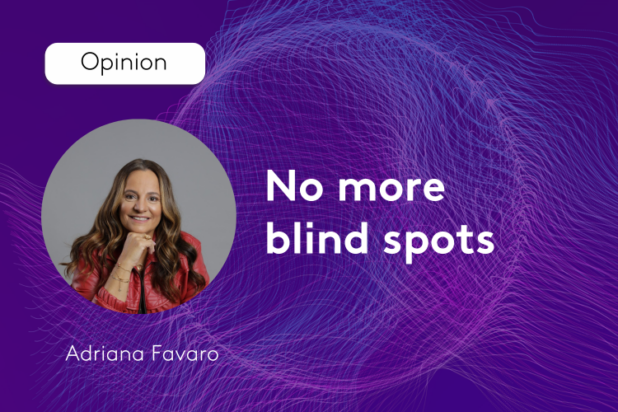Video’s ‘multidirectional’ nature is reshaping brands, audiences and commerce, writes Adriana Favaro — drawing upon insights from Kantar IBOPE Media’s recent ‘Inside Video’ report to ensure robust audience measurement remains high on the agenda for marketers seeking clarity in an increasingly complex ecosystem.

Video is no longer a one-way channel flowing from broadcaster to viewer. It is a fluid, multidirectional ecosystem where creation, distribution and consumption happen simultaneously across devices, platforms and formats. From polished campaigns to user- or even AI-generated clips, from mobile feeds and connected TVs to digital out-of-home, video now flows in multiple directions at once.
This changing, multidirectional shape brings more ways to connect with people, but it also creates new layers of complexity. For marketers, it means that broad reach on its own is no longer the full picture, or even the end goal. Indeed, in this market attention must not only be captured, it must also be converted into intention: the motivation to engage, augment, buy, or share. Often this means personalising content in ways that can be extremely challenging at scale.
As Kantar Media’s 2025 Inside Video report explores, artificial intelligence is reshaping how these interactions happen. Predictive models are helping to identify behaviour patterns and detect intent, while generative tools allow content to be created and adapted for different audiences. During Brazil’s 2024 Black Friday, for instance, some major brands used AI to shape campaigns in real time, adjusting messaging and targeting in response to emerging trends across different segments. It’s an early glimpse of what more dynamic, responsive video marketing could look like.
The rise of content commerce
These shifts are not only affecting how campaigns are planned, but also how video links to commerce. In Brazil, 86% of all video viewing time now happens on TVs and connected TVs — showing that the large screen remains central, but in new ways. Technologies like TV 3.0 bring transactional features into the experience itself, allowing viewers to interact and even make purchases without leaving the content — something viewers in the US may be familiar with following Roku and Walmart’s unique ‘shoppable ads’ partnership.
It won’t be for everyone, but people are open to this. According to the same research, half of Brazilian viewers say they actively notice products shown in TV shows or films. Among those using ad-supported streaming platforms, 63% go online to search for those products afterwards. This behaviour is not unique to Brazil — it echoes findings from Europe, North America and Asia, where video advertising continues to influence decision-making when delivered in the right context.
Measuring the complete picture
For marketers, this creates a strong case for better data integration and planning. It’s not just about having a presence across different video media or platforms, but about ensuring creative, targeting and measurement are working in tandem. Without this integration, there’s a real risk of blind spots — missed signals, duplicated reach, or mismatched outcomes.
This is where audience measurement takes a central role. As people engage with video across TV, streaming, social media and beyond, understanding the full picture is harder than ever. But that understanding is essential. Brands need to know who they are reaching, how often, and with what effect.
Cross-media audience measurement provides the answer. It allows marketers to capture real viewing behaviour across platforms and devices, while avoiding duplication and distortion. Moreover, by combining high-quality panels with big data — a hybrid methodology already being used with partners such as the BBC and DAZN — it’s possible to build a more complete and accurate view of audiences that reflects actual people, not just screens.
Recently we partnered with Bancolombia to enable the Latin American bank to measure the de-duplicated audience of its campaign across linear TV, YouTube and Meta platforms via our Campaign Audience Validation™ solution – and optimise the mix in real time. This approach enabled Bancolombia to achieve an 86% positive brand association and reach 95% of their target audience across media, exceeding its initial goal by 6 and 15 points respectively. View the full case study here.
Yet, this isn’t about adding another dashboard. It’s about having the right tools to understand performance, make decisions, and plan investment with confidence. In an environment where content is everywhere and attention is so highly fractured and fleeting, the ability to connect the dots is a clear strategic necessity.
Video is now the most active layer of the media landscape. It brings together creativity, data, distribution and commerce in ways we’ve not seen before. And as it becomes more embedded in daily life — whether on the sofa, on the move, or in the palm of a hand — its influence will only grow.
The priority for brands is to stay connected to this shift. That means recognising how people engage with content across different contexts, and being ready to respond. It also means ensuring there is clarity and confidence in how that engagement is measured.
There are no fixed lines in today’s video ecosystem. Content moves in all directions, and the same must be true of the systems we use to track it. Brands that embrace this reality — and build strategies around it — will be better placed to adapt, respond and grow.
Adriana Favaro is Vice President of Business at Kantar IBOPE Media